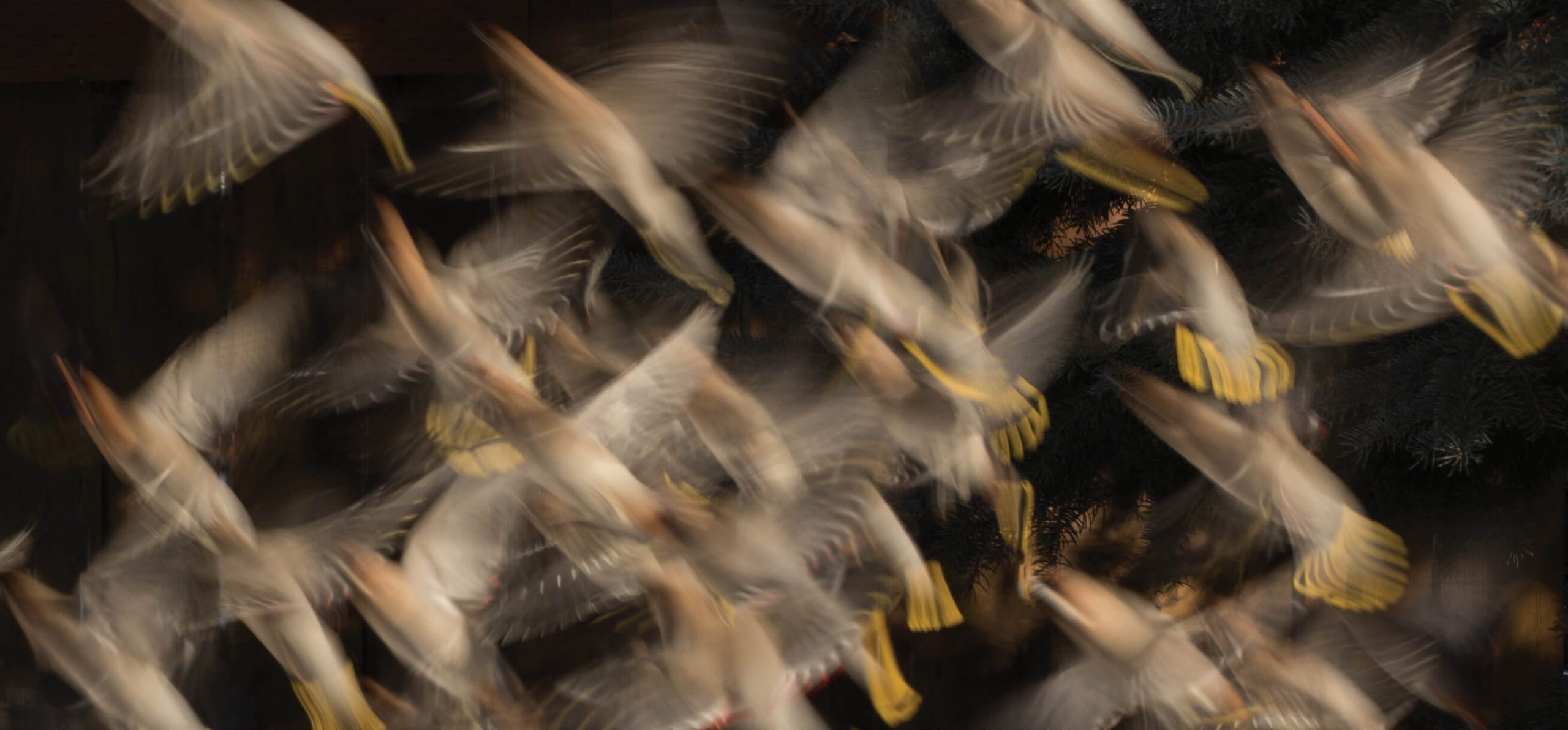
04 Aug Images of the West: Of Feathers and Flight
It was mass confusion in earth tones and brightly colored tails as the Bohemian waxwings lifted off. My brain was in slow motion, along with my slow shutter speed. Aargh, I missed the shot, I thought. Upon viewing the camera’s screen, flashes and splashes of wing patterns and colors mesmerized me.
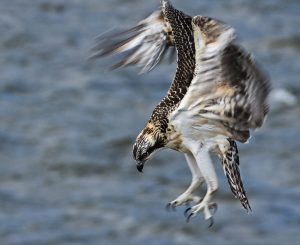
Blurred wings concentrate focus on the head of this bird as it drops toward the choppy water.
Over three decades ago, after my second solo sojourn to southern Africa, my educator aunt asked, “What’s your purpose in returning to Africa?” I found it a challenging question, one that ignited a spark of creativity and drove me searching for the answer. For the next two decades — between 1987 and 2010 — I returned as a solo traveler, photographing and writing in southern Africa during sojourns that ranged from two to six months. I’d become impassioned with the wildlife sounds at night as I lay in my tent. That one motivating question from my aunt pushed me into a life of keen observation of the behaviors of wild animals. As long hours stretched into days and weeks with patient surveillance, I captured impactful images of all I witnessed.
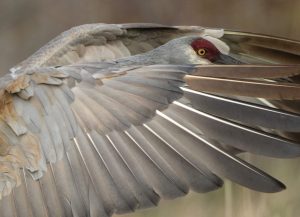
With a bright red head and peering eye encompassed by long, overlying wing feathers, this sandhill crane took me by surprise with its sudden flight.
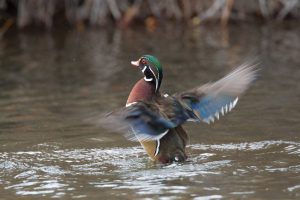
After bathing, waterfowl like this wood duck will rise up and flap their wings. The artistic blend of a sharp head, soft and blurred wing motion, and the streaked lines from the water augment the photo.
South African publications featured my photos and stories as my self-taught photography developed considerably. By 2010, my book, Wildlife of Southern Africa, appeared in bookstores. Publishing had become the next key motivator, offering a sense of purpose.
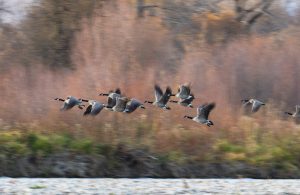
From my kayak on the Missouri River, geese appear blurred by a slow shutter speed, which is muted by autumn tones.
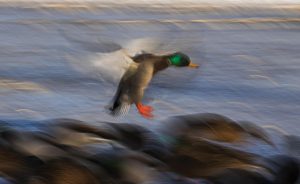
low shutter with some intentional camera movement presents an impressionistic image of a mallard as it lands.
Between my adventures to Africa, I realized there was plenty of activity at home in Montana. In addition to the mammals, myriad birds were doing their acrobatics, just waiting for my photographic interpretation. While my artistic eye evolved, I began to see beyond my subject with a renewed focus, and the help of a long lens.
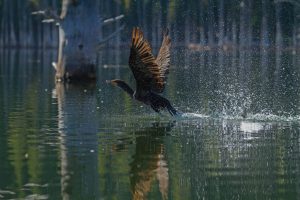
A cormorant drops from its perch on a limb, landing in the water with a dramatic splash.
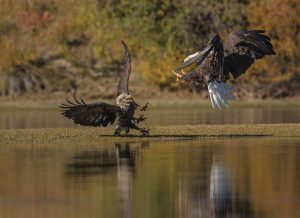
Mature and immature bald eagles clash over a fish.
My adapted eye dissected my subjects. I was attracted to overlying wing feathers with delicate edges. I now scrutinized shapes on colorful breasts and wing patterns; I became enamored with nature’s intimate designs. I began to slow my shutter speed enough to maintain a sharp head while capturing a blurred wing. Newly inspired, I developed my own creative impressionistic style, with a slow shutter speed for the entire photo. While I was plenty exasperated by my experimentation’s occasional failure, I was heartened by the successes, by this new perspective on bird photography, the challenge to the traditional “tack sharp” focus.
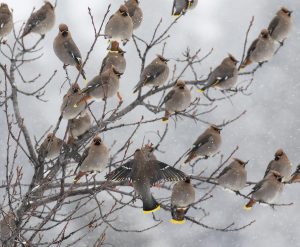
As its mates perch on limbs under a gentle snowfall, one Bohemian waxwing spreads its wings.
Though I haven’t completely left the idea of “tack sharp” behind — my shutter release is still on a high enough speed to capture the beauty of flamboyant wings while birds perform their acrobatic aerial maneuvers — mentally and artistically, I’m moving beyond the photographic norm, stimulated by possibility.
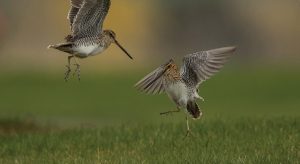
Common snipes leap high as they court each other.
Still, in the end, it’s the enjoyment of being out there, no matter if it’s hot or cold, and observing behaviors that often go unseen.
Carol Polich has been a nature photographer and author for the past three decades. In 1996, she won the grand prize in the National Geographic Traveler photo contest, which sent her to Nepal. Her photos and stories have been regularly featured in a variety of American and international magazines, and she has two photo books to her credit.




No Comments